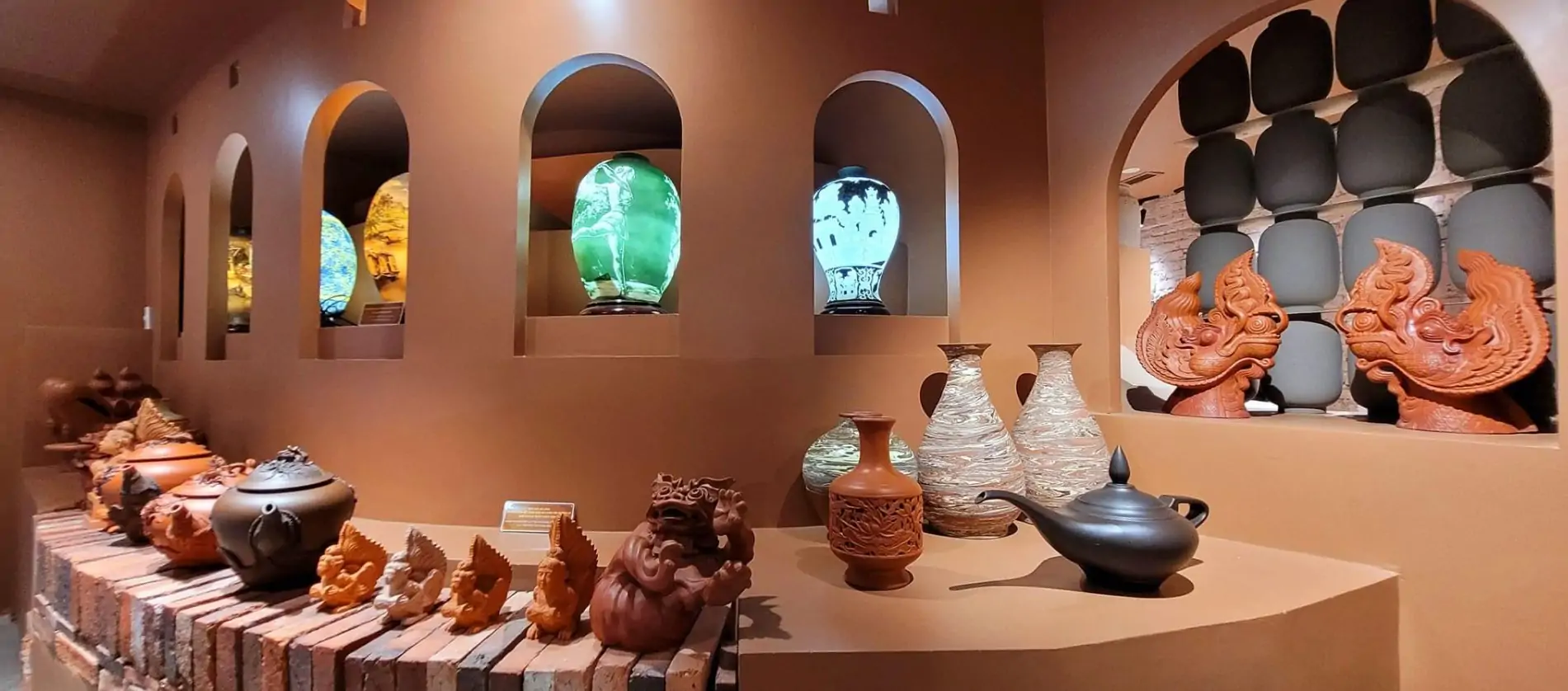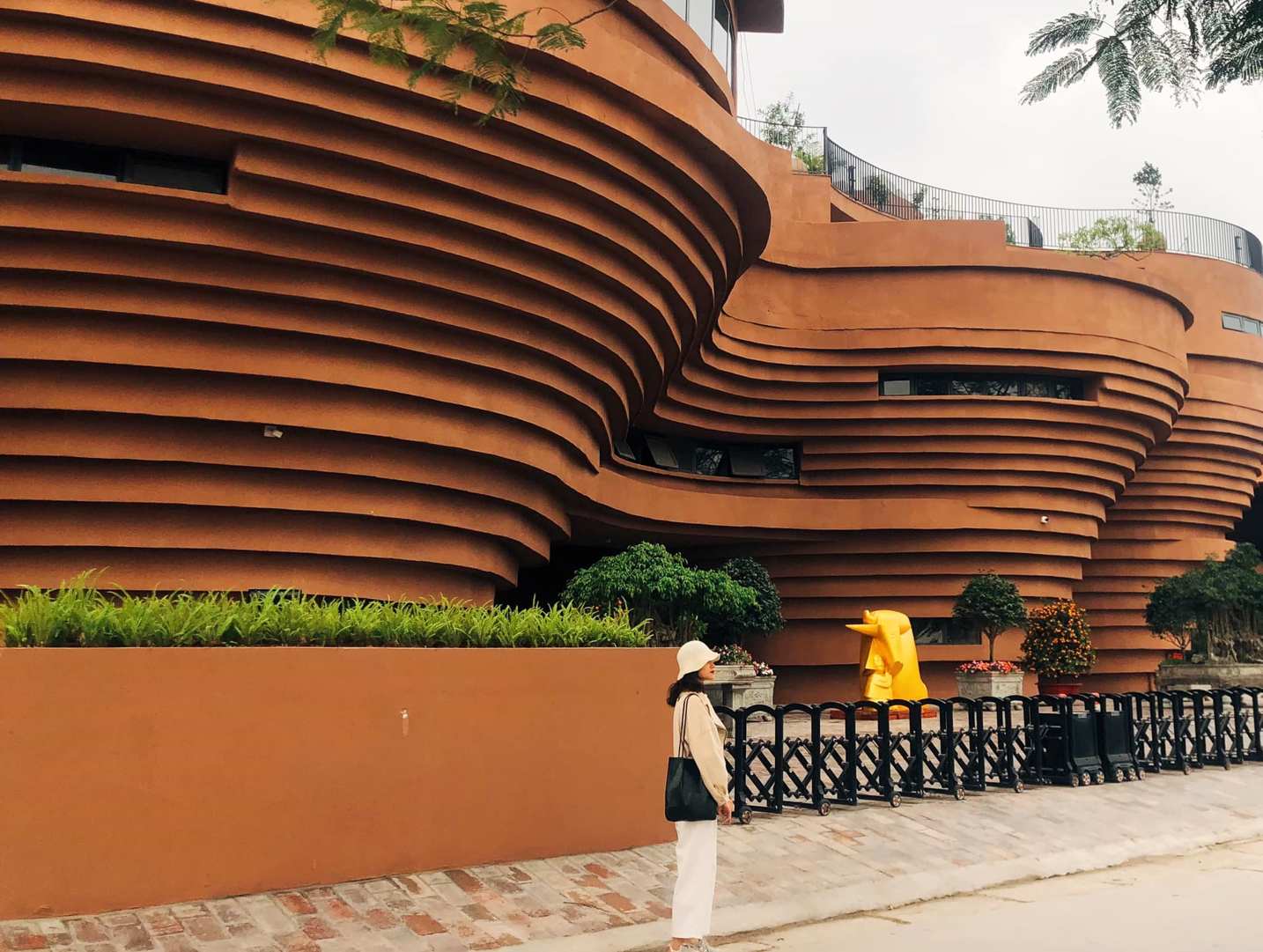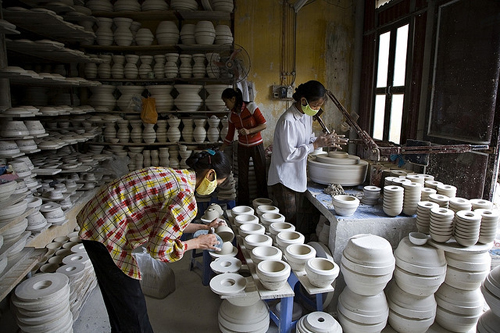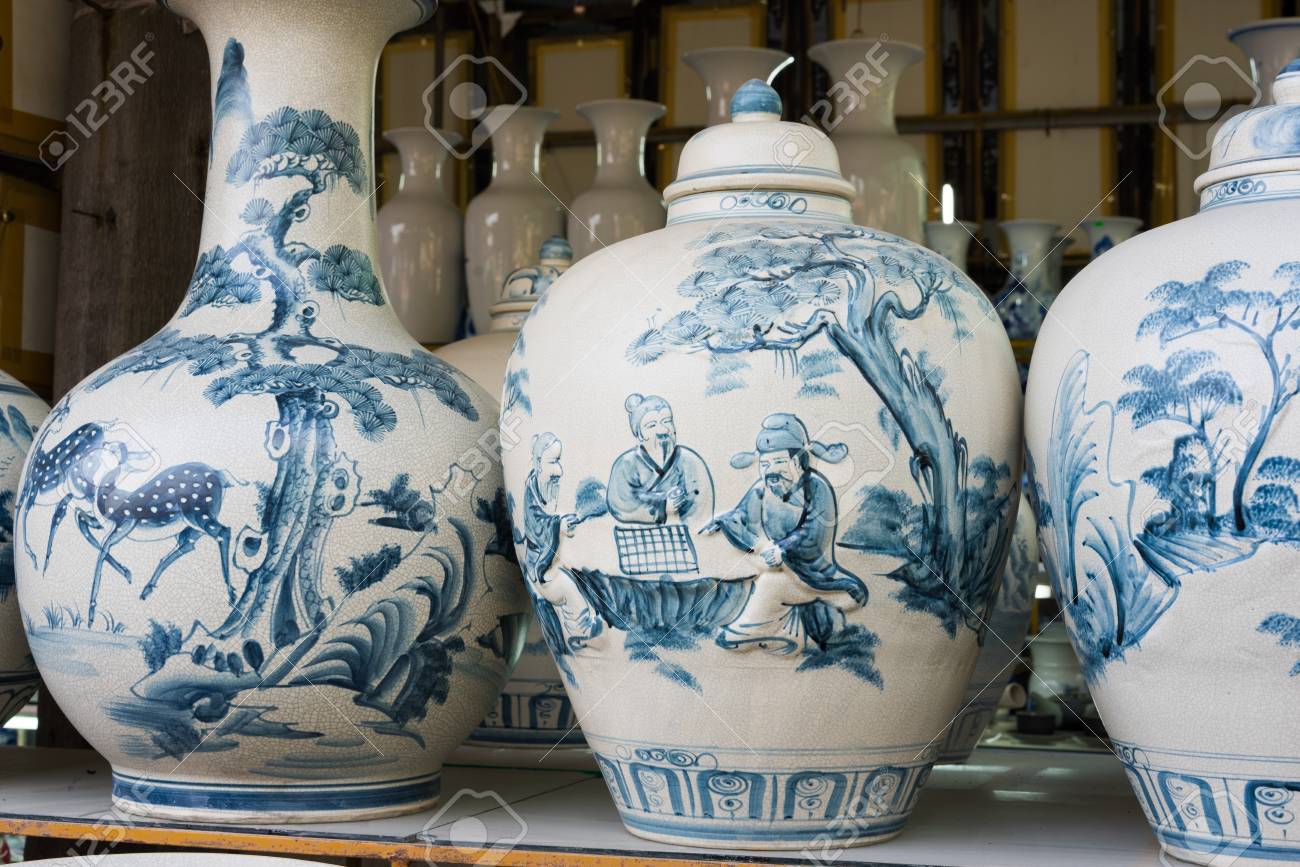News
Participate in Festivals Featuring Bat Trang Ceramics
Bat Trang ceramics represent a rich heritage of Vietnamese craftsmanship that has flourished for centuries. These exquisite pottery pieces, renowned for their unique designs and high-quality materials, have gained international recognition. Participating in festivals featuring Bat Trang ceramics is an immersive experience that offers not only the chance to appreciate these artistic treasures but also to delve into Vietnam’s cultural identity and artisanal traditions. This article explores various aspects of such festivals, from historical contexts and artistic techniques to community involvement and global impact.
The Historical and Cultural Significance of Bat Trang Ceramics Festivals

Festivals celebrating Bat Trang ceramics are more than just exhibitions—they are vibrant platforms where history, culture, and art converge. Understanding the background of these festivals enhances the appreciation of the craft and its role in Vietnamese society.
Bat Trang ceramics have a history spanning over 700 years, originating from the village of Bat Trang, near Hanoi, Vietnam. The festivals dedicated to these ceramics serve as living museums, showcasing the evolution of pottery styles from traditional forms to contemporary innovations.
Origins and Evolution of Bat Trang Ceramics
The inception of Bat Trang ceramics dates back to the 14th century during the Ly and Tran dynasties. The village’s geographical location, with abundant natural clay and proximity to trade routes, allowed it to become a pottery hub.
Over time, artisans developed distinctive styles characterized by intricate patterns, smooth glazes, and durable materials. The traditional blue and white porcelain, floral motifs, and depictions of local folklore became signature elements. The community preserved this heritage through generations, passing down techniques that combine artistry with functionality.
Role of Festivals in Preserving Heritage
Festivals encapsulate the spirit of preservation. They act as annual reminders of the village’s contribution to Vietnamese art and history. These events often include live demonstrations of pottery making, workshops for younger generations, and storytelling sessions highlighting the cultural narratives embedded in the ceramics.
The festivals also promote intergenerational dialogue. Elders share their wisdom with youth, ensuring that the knowledge and appreciation of Bat Trang ceramics are sustained. This continuous cultural transmission enriches the festival atmosphere, making it a dynamic blend of education and celebration.
Symbolism and Cultural Identity
Beyond the physical beauty of the ceramics, these festivals emphasize symbolic meanings tied to Vietnamese life. Many ceramic designs reflect philosophical ideas, nature, and daily activities, reinforcing community values and spiritual beliefs.
Participation in these festivals strengthens cultural identity, especially in an era of globalization. Locals take pride in their heritage, while visitors gain insight into Vietnam’s artistic soul. The festivals become spaces where cultural connections are fostered, promoting mutual understanding and respect among diverse audiences.
Artistic Techniques and Innovations Featured at Bat Trang Festivals

A key attraction of festivals featuring Bat Trang ceramics is the opportunity to witness the artistry behind each creation. From clay preparation to glazing and firing, every stage involves skillful craftsmanship that has been refined over centuries.
These festivals showcase both traditional techniques and contemporary experiments, reflecting how artisans innovate while honoring their roots.
Traditional Pottery-Making Processes
The foundation of Bat Trang ceramics lies in meticulous processes that demand patience and precision. Artisans begin by sourcing high-quality white clay from local quarries, cleaning and mixing it to achieve the desired consistency.
Shaping the ceramics involves wheel throwing or hand-building methods. Each piece is carefully molded to maintain balance and form. After initial shaping, the items undergo drying to reduce moisture content before decoration.
Decoration typically features hand-painted designs using cobalt oxide for the classic blue patterns. The glazing process applies transparent or colored layers that add shine and protect the surface. Finally, firing in kilns at high temperatures vitrifies the ceramics, ensuring durability.
Contemporary Adaptations and Creative Experimentation
While tradition remains foundational, modern Bat Trang artists incorporate new aesthetics and technologies. Festivals provide platforms to exhibit these innovations, including non-traditional shapes, mixed media applications, and novel color palettes.
Some craftsmen collaborate with designers to create functional art pieces that appeal to global markets. Experimentation with glaze chemistry and firing techniques results in varied textures and finishes, challenging conventional norms.
This fusion of old and new reflects a living art form responsive to cultural shifts and consumer trends. It also attracts younger artisans eager to contribute fresh perspectives while respecting their heritage.
Educational Workshops and Live Demonstrations
Festivals often feature interactive components such as workshops and live demonstrations. Visitors can engage directly with artisans, learning about the nuances of clay manipulation, painting, and glazing.
These hands-on experiences deepen appreciation for the labor-intensive nature of Bat Trang ceramics. Participants gain insights into the technical challenges and creative decisions involved in pottery-making.
Such engagement transforms spectators into active learners, fostering a personal connection to the craft. Moreover, workshops encourage cross-cultural exchanges, enriching the festival environment with diverse viewpoints.
Community Engagement and Economic Impact of Bat Trang Ceramic Festivals

The influence of Bat Trang ceramics festivals extends beyond cultural preservation; they contribute significantly to local economies and social cohesion. These events mobilize community participation, enhancing livelihoods and strengthening societal bonds.
Boosting Local Economy through Tourism and Trade
Festivals attract both domestic and international visitors, generating revenue for the village and surrounding areas. Hospitality sectors such as hotels, restaurants, and transportation benefit from increased demand.
Artisans gain direct access to markets, selling their ceramics without intermediaries. This financial empowerment supports sustainable livelihoods and incentivizes quality craftsmanship.
Additionally, festivals create opportunities for small businesses offering complementary products like souvenirs, food, and cultural performances. The economic ripple effect fosters broader development within the community.
Social Cohesion and Cultural Pride
Organizing and participating in these festivals require collective effort, fostering collaboration among villagers. Committees coordinate logistics, artisans prepare exhibits, and volunteers assist guests, creating a sense of shared purpose.
Such cooperation strengthens social ties and nurtures communal identity. Celebrating Bat Trang ceramics becomes a source of pride, motivating residents to safeguard their heritage.
Moreover, involving schools and youth groups in festival activities promotes intergenerational solidarity and ensures cultural continuity.
Challenges and Opportunities in Festival Management
Despite the benefits, managing large-scale festivals poses challenges. Balancing commercialization with authenticity requires careful planning. Over-commercialization risks diluting cultural significance, while inadequate infrastructure may hamper visitor experience.
Effective marketing strategies are essential to maximize reach without compromising local values. Collaboration with government agencies, tourism boards, and cultural institutions can provide resources and guidance.
Innovative approaches, such as incorporating digital platforms for virtual tours or e-commerce, offer additional avenues to expand impact while preserving the essence of Bat Trang ceramics.
Global Recognition and International Influence of Bat Trang Ceramics Festivals

The allure of Bat Trang ceramics transcends national borders, with festivals playing a pivotal role in elevating global awareness. These events serve as cultural ambassadors, showcasing Vietnamese artistry on the world stage.
International Participation and Exchange
Many Bat Trang festivals invite international artists, collectors, and scholars to participate. Such exchanges facilitate cross-cultural dialogues and foster collaborative projects.
Exhibitions often feature comparative displays of ceramics from different cultures, highlighting commonalities and distinctions. This contextualization enriches appreciation and inspires innovative interpretations.
Furthermore, international competitions held during festivals recognize outstanding craftsmanship, encouraging higher standards and global networking.
Promoting Vietnamese Art in the Global Market
Festivals function as launchpads for Bat Trang ceramics entering international markets. Curators and buyers discover unique pieces that blend traditional aesthetics with contemporary relevance.
This exposure increases demand, benefiting artisans economically and encouraging further innovation. Additionally, UNESCO and other cultural organizations sometimes endorse these festivals, enhancing credibility and attracting funding.
Marketing efforts capitalize on the narrative of handcrafted excellence and cultural depth, appealing to consumers seeking authentic, meaningful art.
Challenges of Maintaining Authenticity Amid Globalization
As Bat Trang ceramics gain popularity worldwide, there is pressure to mass-produce or alter designs to suit foreign tastes. Festivals serve as critical sites for negotiating these tensions.
Maintaining authenticity involves educating audiences about the cultural significance and artisanal value of original techniques. Festivals emphasize storytelling and direct engagement to build informed appreciation.
Protecting intellectual property rights and supporting artisan cooperatives also help preserve the integrity of Bat Trang ceramics amid expanding global interest.
Table: Overview of Key Bat Trang Ceramics Festivals
| Festival Name | Location | Duration | Main Features | Target Audience | Unique Highlights |
|---|---|---|---|---|---|
| Bat Trang Traditional Craft Festival | Bat Trang Village | 5 days | Exhibitions, live pottery demos, workshops | Local residents, tourists | Interactive clay sculpting sessions |
| Vietnam Ceramics Festival | Hanoi | 7 days | Art fairs, international showcases, auctions | Collectors, art lovers | Cross-cultural ceramic exhibitions |
| Autumn Ceramics Festival | Bat Trang Village | 3 days | Cultural performances, craft markets, contests | Families, students | Youth pottery design competition |
| Asia-Pacific Ceramic Expo | Hanoi | 10 days | Trade shows, seminars, artist residencies | Industry professionals | Networking and innovation forums |
| Tet Holiday Ceramic Fair | Bat Trang Village | 2 weeks | New year-themed ceramics, gift stalls | General public | Traditional Tet ceramic collections |
Conclusion
Participating in festivals featuring Bat Trang ceramics offers a multifaceted experience that encompasses artistic admiration, cultural education, and community engagement. These festivals honor centuries of tradition while fostering innovation and global connectivity. They play a crucial role in preserving cultural identity, empowering local economies, and promoting Vietnamese artistry on an international scale. Immersing oneself in such celebrations provides a deeper understanding of the artistry and significance embedded in each ceramic piece, creating lasting memories and inspiring continued appreciation for this remarkable craft.
